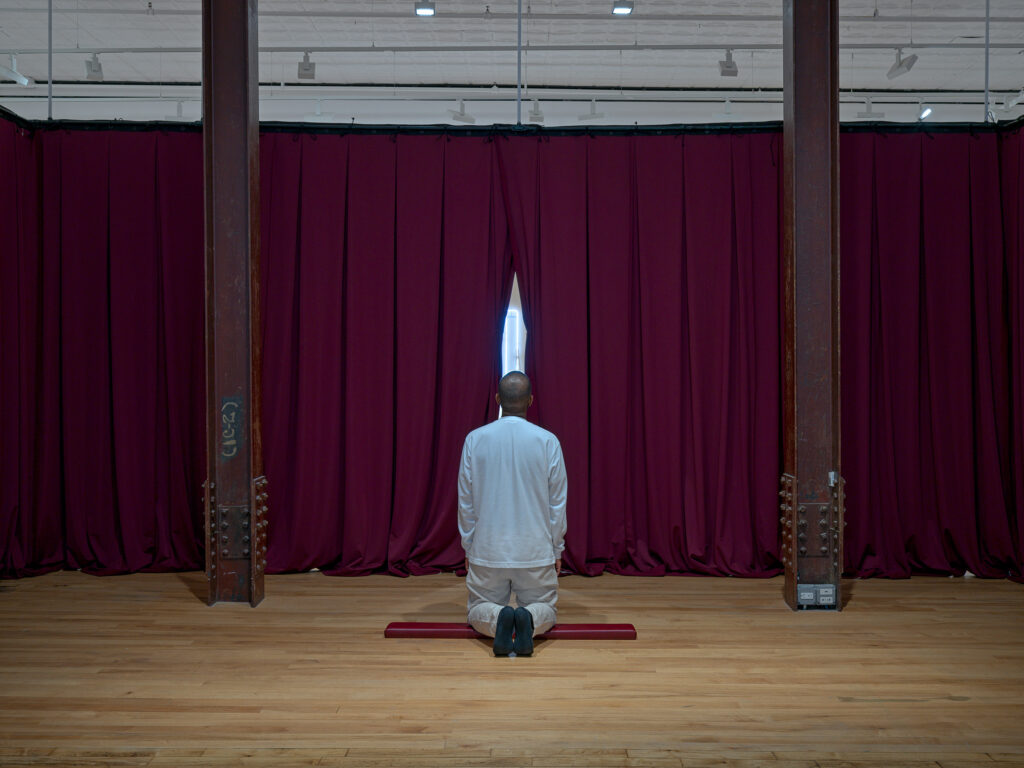
EJ Hill
52 Walker | 52 Walker Street
Through September 13, 2025
Kneel. The eroticism of that one word command, given by the Hot Priest, after pulling back the curtain of the confessional. The Catholic church a hierarchy of mostly subs, some doms in starched dresses. Like here, a passage from Simone Weil’s notebooks right out of Fleabag:
“He led me before the altar and said: ‘Kneel.’ I told him: ‘I have not been baptized.’ He said: ‘Fall down on your knees before this place, with love, as before the place where truth exists.’ I obeyed.”
I remove my straw hat when entering the gallery to see EJ Hill’s newest endurance project, his first in seven years, for which he kneels every day—all day—during the run of his show “Low-Slung Promises on the Tongues of the Devout” at 52 Walker. The mise en scène works immediately: a red velvet curtain, the red leather kneelers, silence. Twelve years of Catholic school come back like muscle memory, the red marks on my knees—white when I press my fingers into the flesh. I wanted to be a nun, marry God, bride at nine.
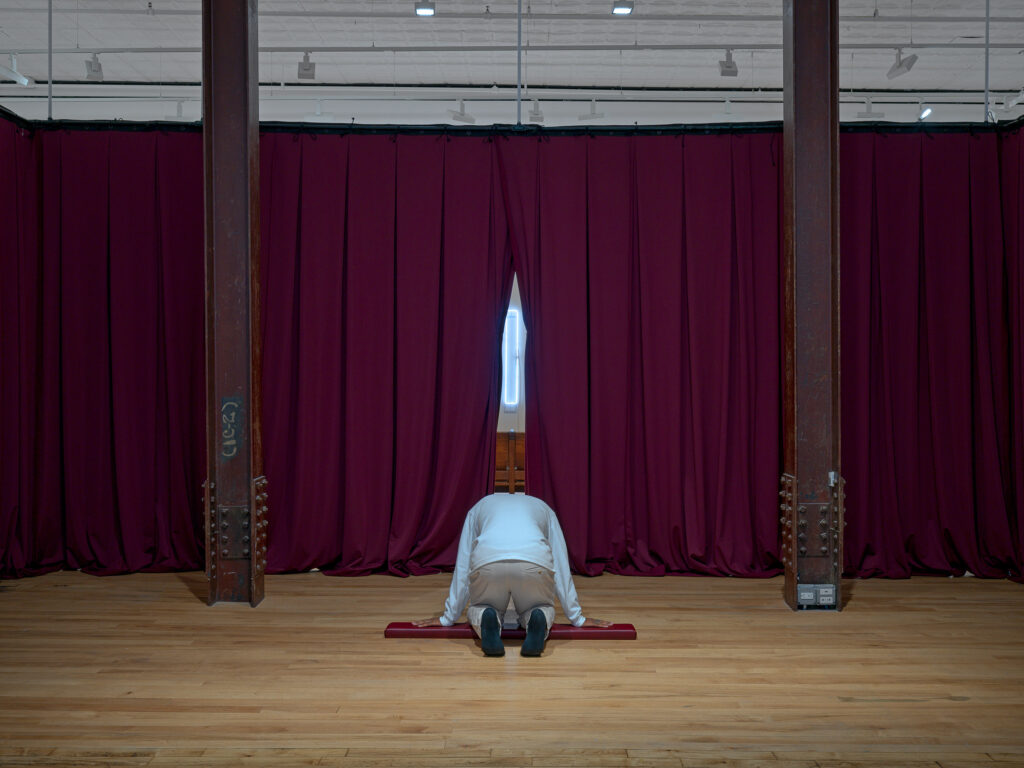
The 40-year-old Black queer artist draws here from bodily prostrations associated with saintly mortifications of the flesh, much like he did in his 2018 performance-installation Excellentia, Mollitia, Victoria, included in the Hammer Museum’s “Made in LA” biennial, where he stood on a podium for the length of the show, nine hours a day for three months. This ritual, which referenced not only St. Simeon on his platform, but also athletes on the Olympic medal podium, followed a series of runs or “victory laps” around every school Hill attended, from his preschool in South Central Los Angeles to UCLA (where he earned an MFA), reclaiming space where—the artist has said—he did not feel always feel like he belonged.
Of course, beyond the devotional, kneeling connotes power—even brutality—and evokes protest, as well—allusions Hill layers onto this piece. Tibetan monks have kneeled and self-immolated in protest. Colin Kaepernick and others have “taken a knee” during the national anthem to reenact and resist the carceral restraint and killing of Black Americans, men especially, by the police. Walking around the Tribeca gallery, I don’t kneel on one of the reclaimed red leather kneelers (listed for sale), above which the artist has written a note, dated the week earlier, speaking of a “desire for padding.” (It continues, in part: “I used to scoff at ‘thoughts and prayers’ after disaster and catastrophe.”) I walk quickly past the large, framed, striped monochromatic kneeler pad “paintings,” marked with the artist’s indentations; the Flavin-esque neon rectangle (perhaps a nod to the Minimalist’s installation in the Santa Maria Annunciata Church in Milan); past the velvet enclosure, around back, to sit on a wooden pew and regard the artist as present.
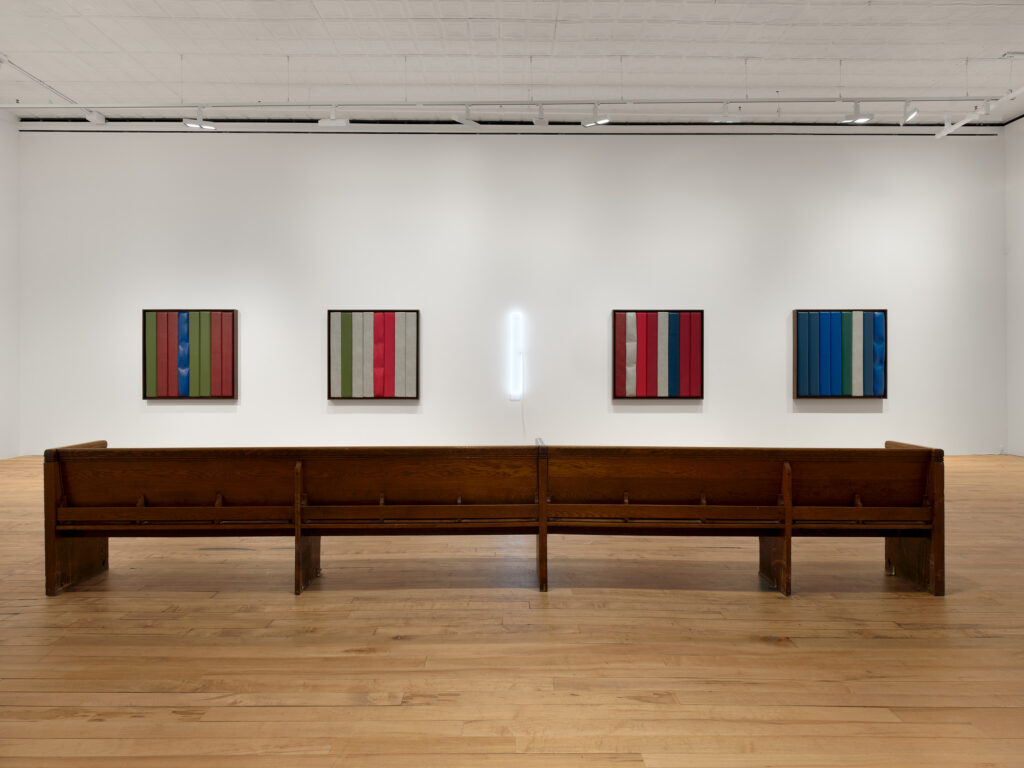
I sit in the enclosed space for a while and observe Hill, clad all in white, except for black socks, his toes pointed towards each other. The neon rectangle glows through the gap in the curtain, which is now in front of us both. At times, the artist shifts, moving his hands or his feet, a subtle swaying movement. A kneeling pose is a meditative, although strenuous, ritual (you can use a blanket under your knees in yoga, even a sub can ask for a pillow).
In the history of durational art, there’s a distinction between more private works, such as Tehching Hsieh’s punching of a clock in his studio once every hour for a year, from 1980-81, and pieces that necessarily involve an uncomfortable audience. I experience an intimacy in Hill’s exhibition that evokes Yoko Ono’s kneeling Cut Piece, 1964, as well as Marina Abramović’s sitting and staring in The Artist is Present. While Abramović’s performance at the Museum of Modern Art in New York in 2010 was so stark and heavy, there’s a lightness here—the artist offers some space to the viewer. Hill creates the sense of being together that’s like being in church—at once with others and alone—as well as a sense of stretched-out time. The space is silent except for the sounds of gallery workers (I hear an errant ringtone when I walk in) and, more distantly, the clamor of the street. I wonder how aware he is of me.
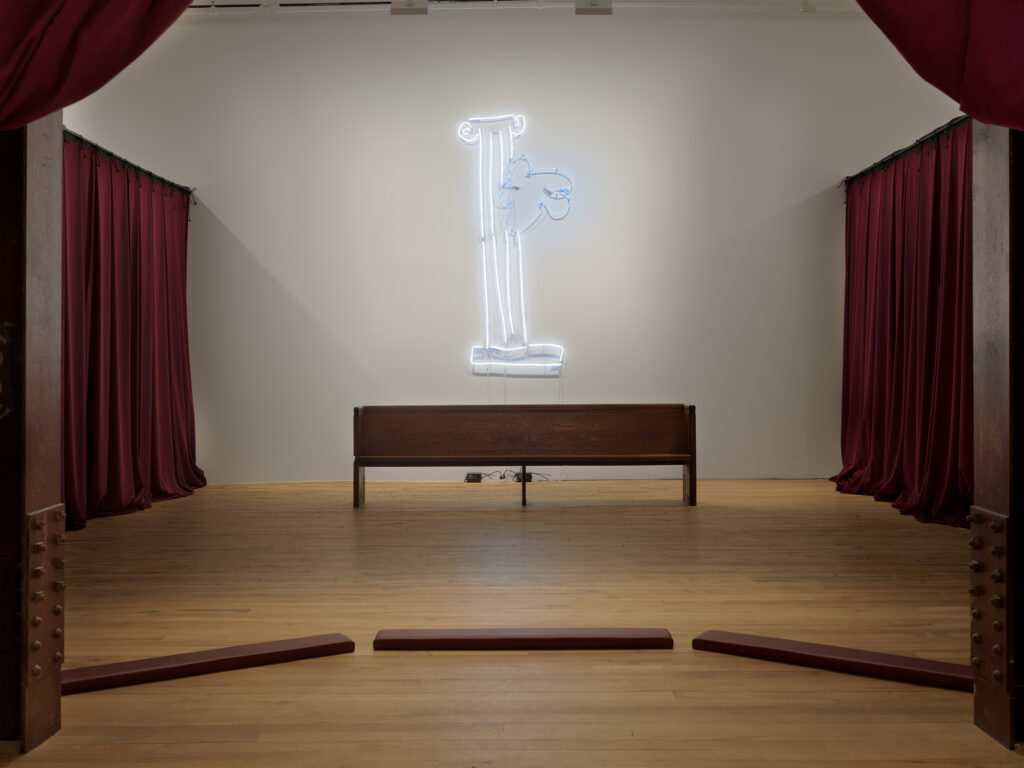
There has always been religiosity in endurance-art rituals. Linda Montano turned to performance after leaving the convent as a novitiate in the 1960s, her silent performances inside St. Patrick’s Cathedral a precursor to Hill’s kneeling. Walking out and around again, I peek through the curtain, and the artist is as still as a statue, eyes closed.
In a talk given in 2019, Hill traced a movement, from the more confrontational pieces of his art school days that reacted against the insularity of the art world and the alienation he felt (licking a wall during an open studio event until his tongue bled, creating a shaky line drawing reminiscent of Ana Mendieta’s Iowa-period Body Tracks, dating from the 1970s), to more recent practices that leave space for restorative justice within his sensitive and intense investigations. He recalled the total exhaustion and inertia that he felt during the murders of Black Americans by police in 2015 to constantly “speak on large systematic oppressions,” while aware of the lethal threats to his own body, when outside, in public space. That year, he returned to painting bright, fluffy abstractions as a way of restoring calm and energy. A few of these acrylic works—on paper or panel—are on view in the show, their loose geometric patterns mimicking those of a stained-glass window (the charge of the pink in them echoing in the pink neon sky sculptures shown elsewhere).
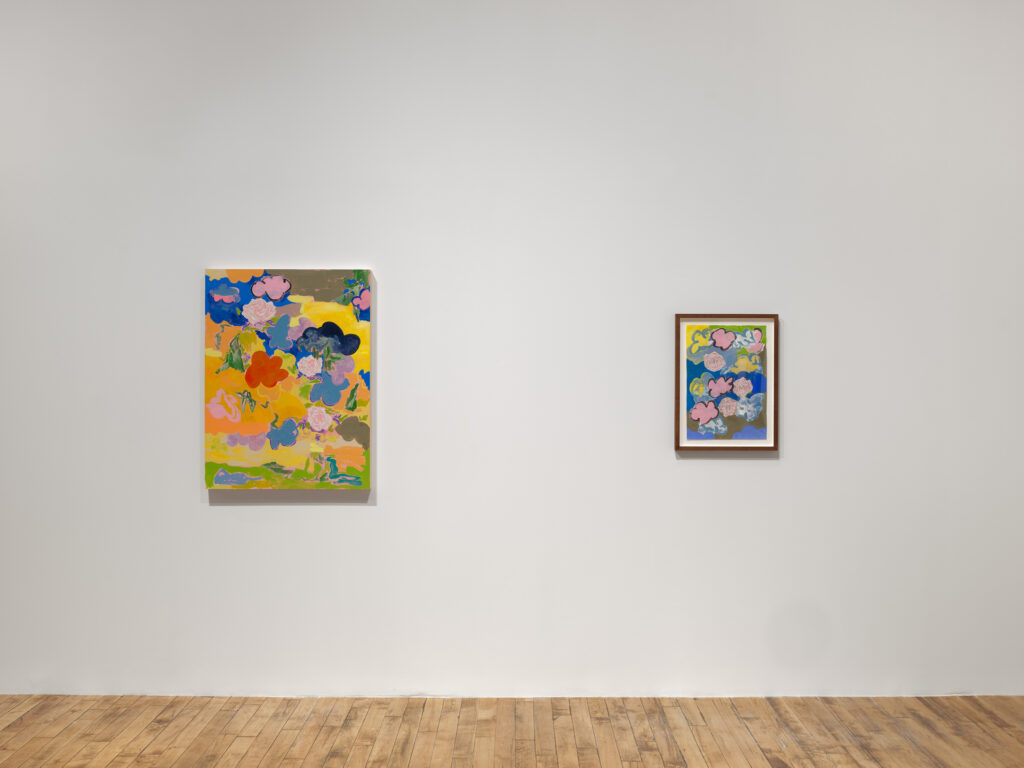
In 2016, he also created A Monumental Offering of Potential Energy, first shown at the Studio Museum in Harlem, a neon-and-wood 40-foot-long rollercoaster sculpture, with a central platform upon which he lay for months, up to nine hours a day, without bathroom breaks or food. This was a ritual that came out of a desire “to reframe how the motionless, horizontal black body reads,” from being connected purely to death to other affects—joy and love, space and slowness. In that same 2019 talk, Hill lists as an influence Pope.L’s public performances for which the artist crawled, wearing a business suit or Superman costume, as a way to demonstrate his “lack of verticality, lack of position of power” as a Black man.
As I walked around Tribeca after visiting Hill’s show, I also thought of Pope.L, especially about the knee pain from his endurance pieces, from crawling the length of Broadway, and the stark contrast between the unhoused people on the street (who Pope.L was putting himself in the position of) and their gentrified gallery-district surroundings. I think of how Hill contributed a blank pink page to the 2022 Whitney Biennial catalogue, conceiving it as a space of beauty and resistance against the expected art-world grind, and am unsure what to think of the artworks on offer, given the ephemerality of the tradition that Hill is working within here. It’s difficult to know how to read the reclaimed pews listed for sale, as cynical or as a playful stunt, or as commentary. I don’t know why I found that especially conceptually awkward. I liked the flower and cloud pieces, the spirit and process of them, although they also felt somewhat out of place, feeling less contextualized than the neon and kneeling-pad works. But how else does one make money off performance art?










 in your life?
in your life?